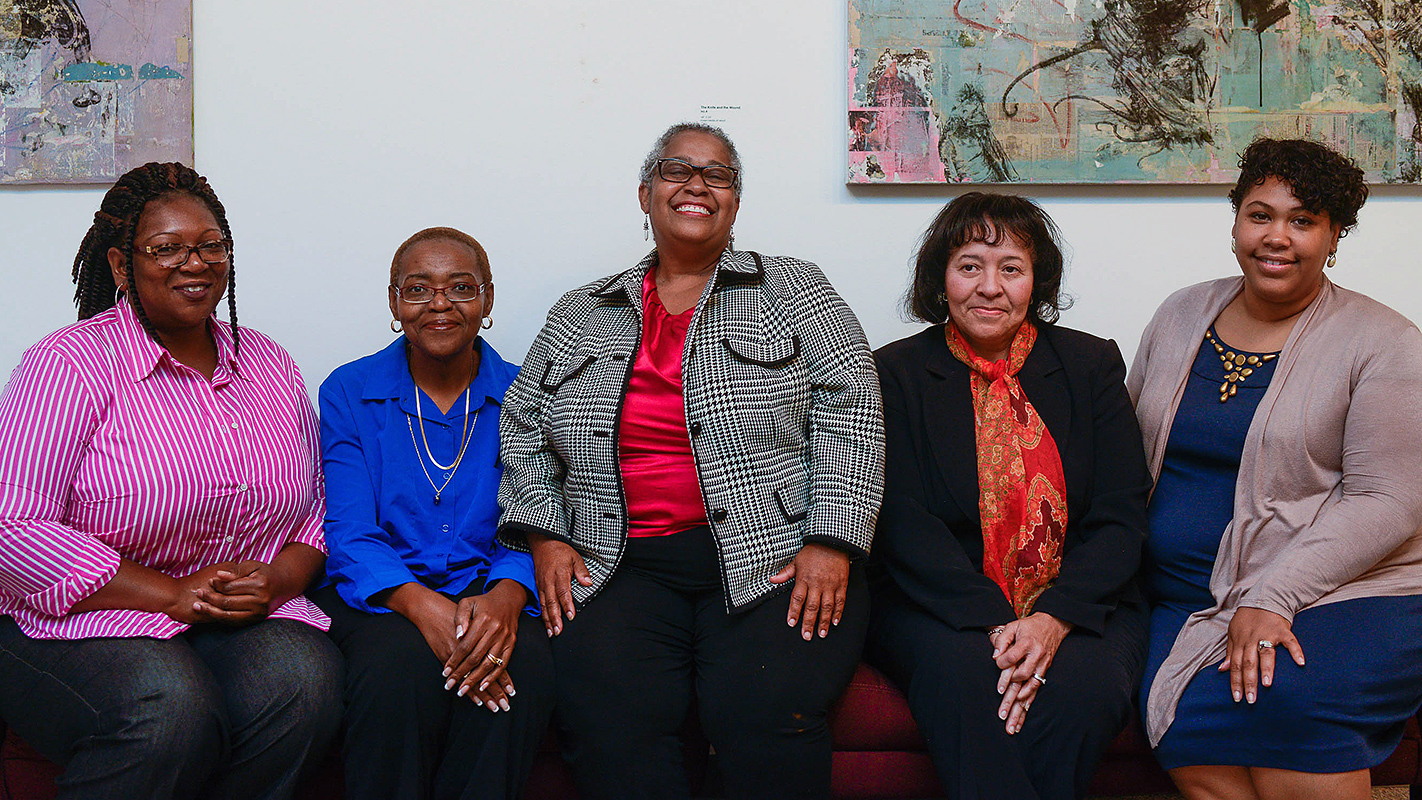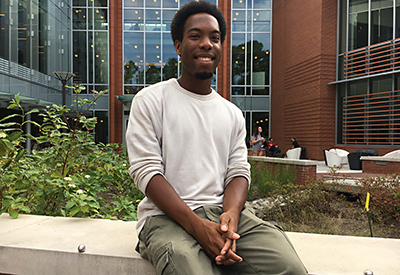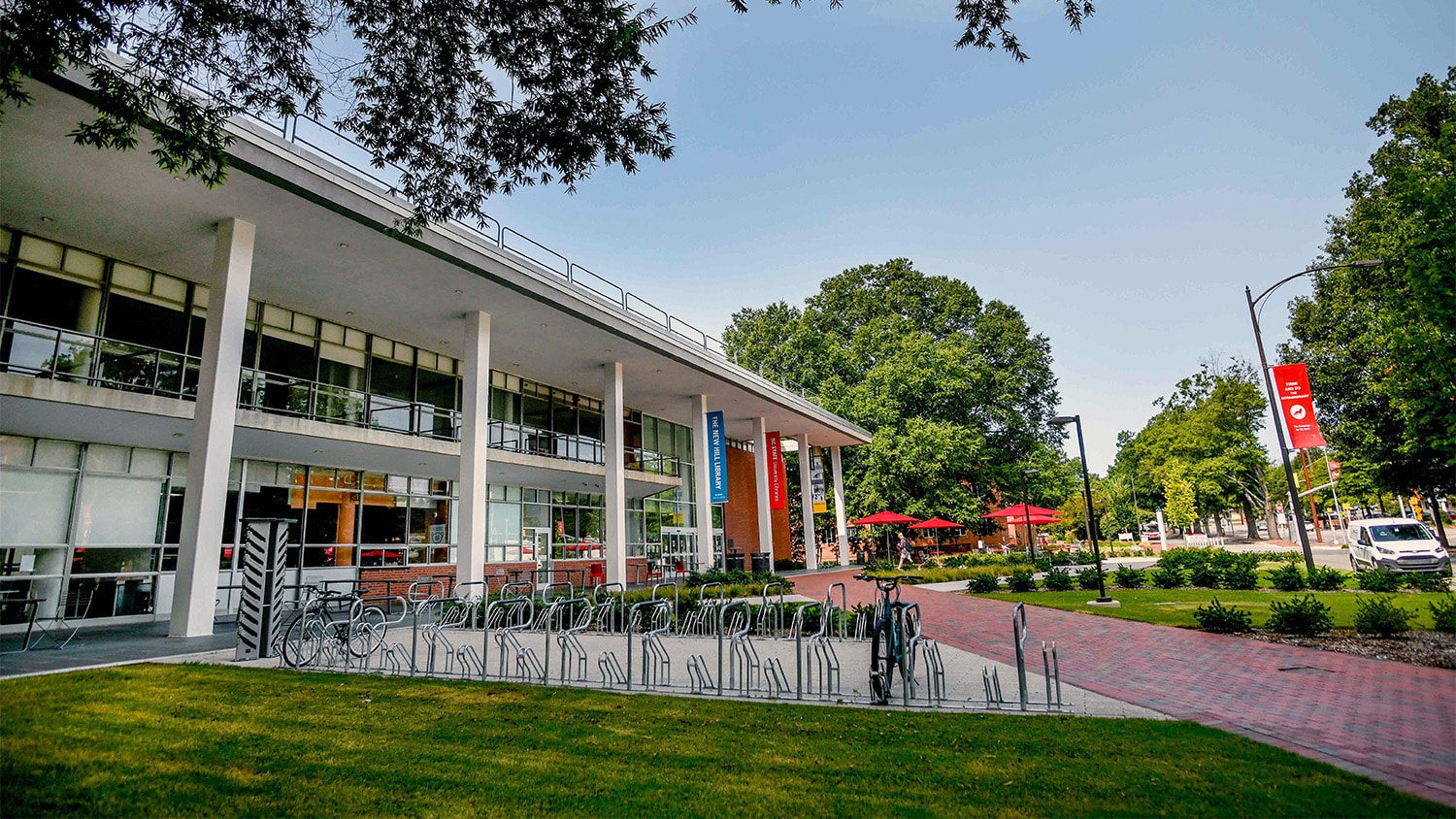African-American Cultural Center Celebrates 25th Anniversary

When NC State opened its doors in 1889, the 52 students in the first freshman class of the North Carolina College of Agriculture and Mechanic Arts (as the university was then known) were all white. It wasn’t until 1953 that the first black students — Robert Clemons and Hardy Liston — attended NC State, as graduate students in the School of Engineering. NC State’s black students, faculty and staff members have achieved many more milestones in the decades since, and now there’s one more for the history books: The university’s African-American Cultural Center turns 25 this year.
“The African-American Cultural Center is a big part of why I’m still at NC State,” says Jordan Anderson, a junior majoring in environmental technology and management in the College of Natural Resources. “From the moment I first walked into the center, on a tour with Multicultural Student Affairs before my freshman year, I felt fully embraced by the folks there.” That embrace was quite literal in the case of Toni “Mama” Thorpe, the center’s program coordinator, who greeted Anderson with one of her signature warm hugs.
“Twenty minutes later,” Anderson says, “I came out with a feeling of knowing who I am, knowing whose I am and knowing where I wanted to go during my time at NC State.”

NC State’s black students didn’t always have such a welcoming place to go on campus. The organization that would eventually become the African-American Cultural Center didn’t come into existence until 1970, when students set up an unofficial gathering spot in the basement of the campus YMCA. They met there for several years, until the building burned down. Then in 1975 they relocated to a larger, more suitable space in the renovated Print Shop, later known as the West Dunn Building.
“The office at the West Dunn Building was the happening place,” says Thorpe, who began volunteering with the cultural center when she took a job at Center Stage in 1991. “I was impressed with how the students ran the day-to-day business, creating schedules and keeping office hours. Even though there wasn’t any air in the summer and not much heat in the winter, they made good use of the space.”
The cultural center spent 16 years making do at West Dunn, but they might have stayed there even longer if not for the visionary leadership of Augustus Witherspoon, the second African-American to earn a Ph.D. from NC State, as well as the university’s first black professor. Witherspoon wanted the cultural center to have a more structured, academically focused mission, but he knew that would require a more suitable space. To make that space a reality, in the late 1980s Witherspoon began strategizing with student leaders, including Kevin Howell, NC State’s first black student body president, who now serves as senior vice president for external affairs for the UNC system.
A New Home
At the time, the university was planning the construction of a new Student Center Annex at the corner of Cates Avenue and Dan Allen Drive, so under Witherspoon’s leadership a group of students proposed to Student Government that the African-American Cultural Center have officially dedicated space in the new annex. Senators in Student Government put the measure on a ballot for a vote, and the measure passed, which is how the cultural center arrived in its current space in 1991. Four years later, the Annex — designed by NC State alumnus Phil Freelon, who was lead architect on the recently opened Smithsonian National Museum of African-American History and Culture — was renamed the Witherspoon Student Center.
By design, the cultural center included a library that would help students develop leadership skills. The library started small, with just 10 books, but now has more than 7,000 items in its broadly interdisciplinary collection, including 2,000 books that are held nowhere else on campus. “The library is a great space for students to study, and every day they come here from all over campus,” says Angela Jenkins, the center’s library coordinator.
The cultural center also features a community gathering space named the Washington Sankofa room — “Washington” in honor of NC State alumnus Dewayne Washington, who is a supporter of the center, and “Sankofa” from the Twi language of Ghana in West Africa, meaning “go back and get it,” emphasizing the importance of remembering and honoring the past.
“This gathering space allows the center to encompass not only the university community but also the community beyond NC State, to help us fulfill our land-grant mission,” Thorpe says.
Another resource the center offers is an art gallery with a rotating selection of exhibits. The current exhibit is Black Man With the Horn, a site-specific installation by artist Antoine Williams.
“A notable fact about the center is the partnership with students over the years,” says Dawn Morgan, assistant director. “The founders included students, and we’ve always worked very closely with other student organizations, such as the Society of Afrikan American Culture, the oldest African-American student organization on campus. Our students have been fighting this fight all along.”
A Year of Celebration
The African-American Cultural Center’s 25th anniversary celebration started in January 2016 with the university’s annual commemoration of the life and work of Martin Luther King Jr., and it will conclude a year later at the university’s 2017 commemoration.
“The theme of our 25th anniversary celebration is examining wellness in African-American spaces,” says Frances Graham, the center’s interim director. A number of anniversary celebration events have already taken place, such as a talk by Freelon and the center’s annual Harambee celebration, welcoming new students to NC State in the fall. Coming up on Nov. 15 is the next installment of the Red, White and Black walking tour, a collaboration between the African-American Cultural Center and NCSU Libraries that teaches participants about African-American cultural history at NC State and in the larger world.
“We’re also really excited about our new Witherspoon-Clark leadership initiative,” says Morgan. “It’s an opportunity for students to engage with the center to learn about examples of African-American leadership and how they can lead in their own communities. The program focuses on identity development from an African-American perspective, which our students find extremely helpful.”
The initiative will include a capstone project that will focus on working to solve community issues, with the goal of helping students identify their passion and how they can act on it to create positive change in the world.
“We’re also hoping to take our leadership students to the new African-American Museum in DC this spring,” Morgan says.
The African-American Cultural Center has come a long way in 25 years, and black students, faculty and staff at NC State have come even farther over the course of the university’s history. Thorpe, who has been with the center since it moved into its current digs, sums up her feelings succinctly: “I think seeing that kind of growth makes the ancestors proud.”
- Categories:


